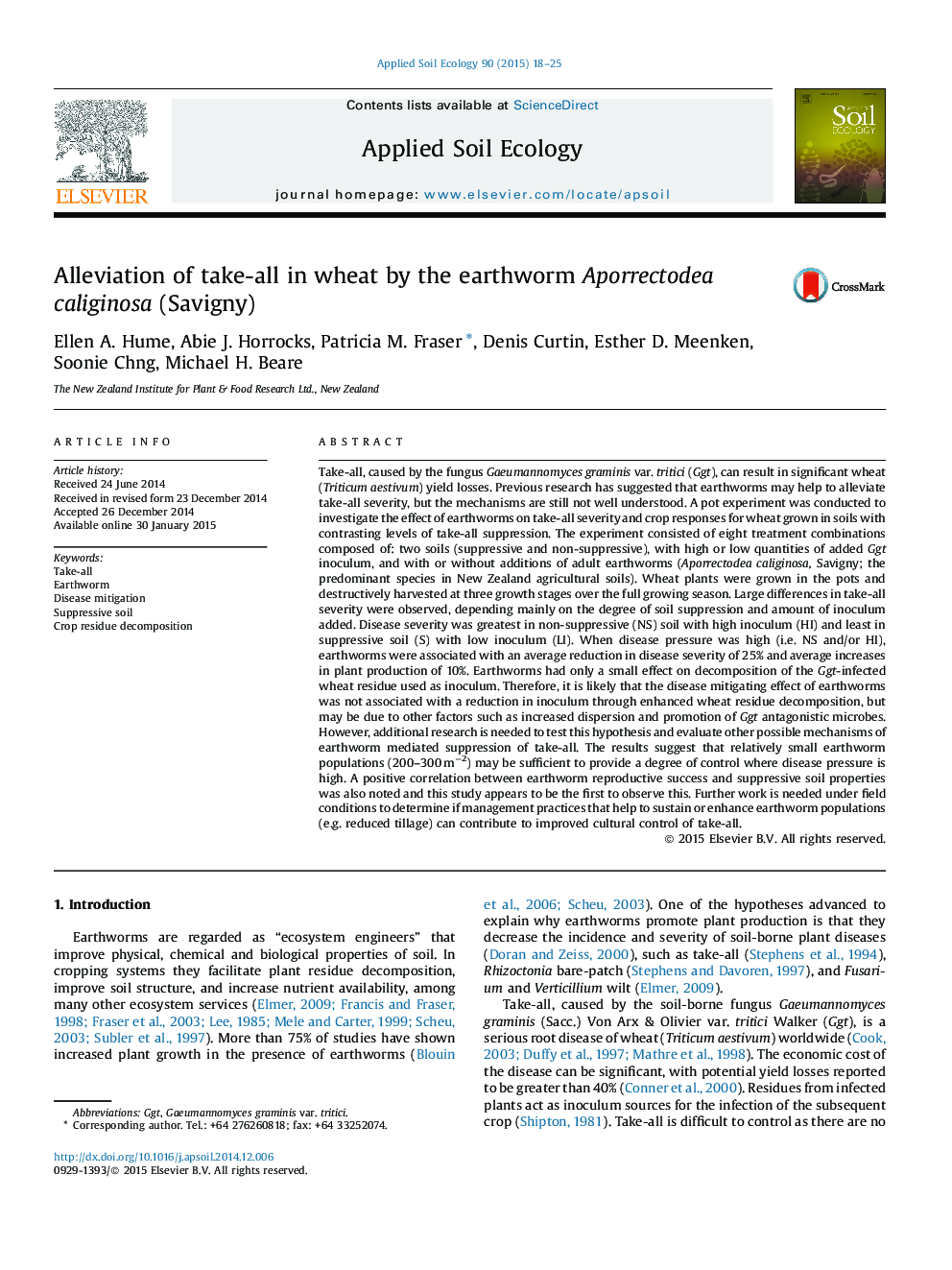| کد مقاله | کد نشریه | سال انتشار | مقاله انگلیسی | نسخه تمام متن |
|---|---|---|---|---|
| 4382003 | 1617793 | 2015 | 8 صفحه PDF | دانلود رایگان |

• Take-all was less severe in wheat grown in disease-suppressive soil.
• Earthworms reduced severity of take-all particularly when disease pressure was high.
• Reproductive success of earthworms was enhanced when soil was take-all suppressive.
Take-all, caused by the fungus Gaeumannomycesgraminis var. tritici (Ggt), can result in significant wheat (Triticumaestivum) yield losses. Previous research has suggested that earthworms may help to alleviate take-all severity, but the mechanisms are still not well understood. A pot experiment was conducted to investigate the effect of earthworms on take-all severity and crop responses for wheat grown in soils with contrasting levels of take-all suppression. The experiment consisted of eight treatment combinations composed of: two soils (suppressive and non-suppressive), with high or low quantities of added Ggt inoculum, and with or without additions of adult earthworms (Aporrectodeacaliginosa, Savigny; the predominant species in New Zealand agricultural soils). Wheat plants were grown in the pots and destructively harvested at three growth stages over the full growing season. Large differences in take-all severity were observed, depending mainly on the degree of soil suppression and amount of inoculum added. Disease severity was greatest in non-suppressive (NS) soil with high inoculum (HI) and least in suppressive soil (S) with low inoculum (LI). When disease pressure was high (i.e. NS and/or HI), earthworms were associated with an average reduction in disease severity of 25% and average increases in plant production of 10%. Earthworms had only a small effect on decomposition of the Ggt-infected wheat residue used as inoculum. Therefore, it is likely that the disease mitigating effect of earthworms was not associated with a reduction in inoculum through enhanced wheat residue decomposition, but may be due to other factors such as increased dispersion and promotion of Ggt antagonistic microbes. However, additional research is needed to test this hypothesis and evaluate other possible mechanisms of earthworm mediated suppression of take-all. The results suggest that relatively small earthworm populations (200–300 m−2) may be sufficient to provide a degree of control where disease pressure is high. A positive correlation between earthworm reproductive success and suppressive soil properties was also noted and this study appears to be the first to observe this. Further work is needed under field conditions to determine if management practices that help to sustain or enhance earthworm populations (e.g. reduced tillage) can contribute to improved cultural control of take-all.
Journal: Applied Soil Ecology - Volume 90, June 2015, Pages 18–25